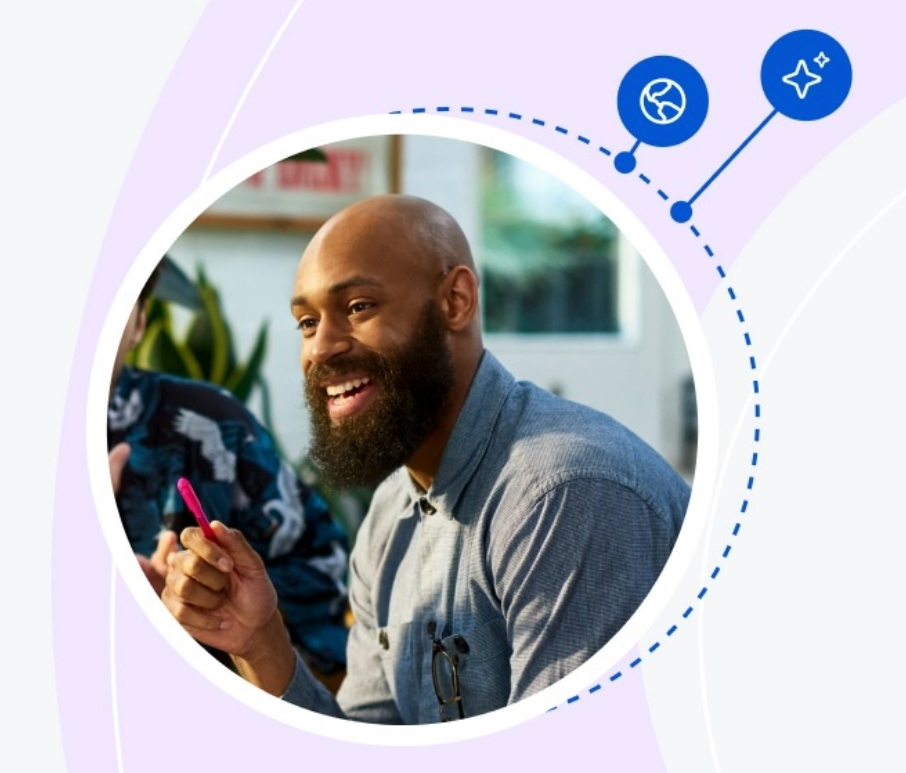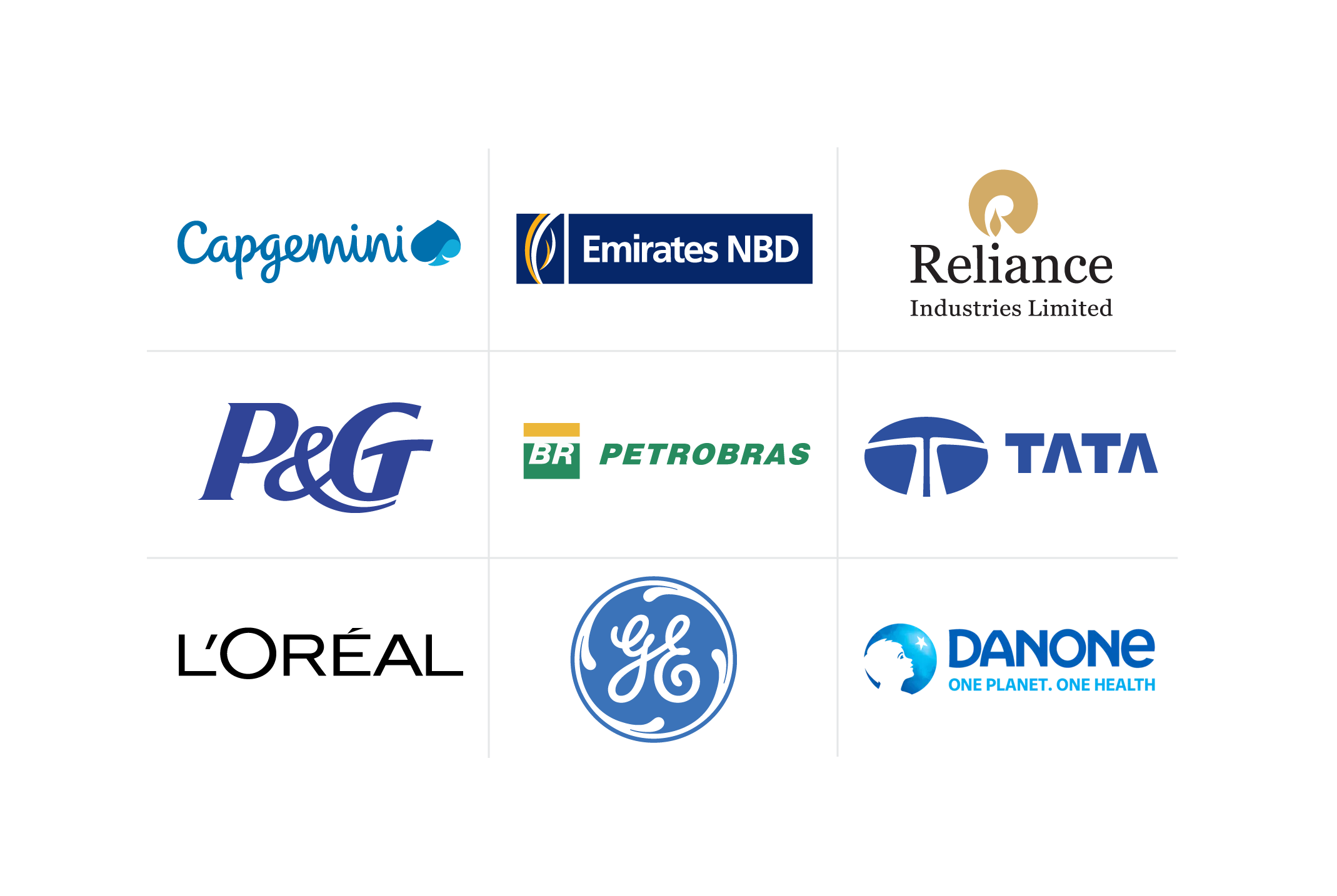Revolutionizing Corporate Learning with Open Educational Resources (OER)
Open educational resources (OER) have changed the way organizations create corporate learning plans. If you’re looking for the best way to engage and train your workforce, continue reading to explore the topic of OER and understand how to implement it.
![[Featured Image] An employee sits at a desk with a textbook and laptop, utilizing open educational resources (OER) for her corporate training.](https://d3njjcbhbojbot.cloudfront.net/api/utilities/v1/imageproxy/https://images.ctfassets.net/2pudprfttvy6/2G4EMbIXWzP8D9yAqj0WrU/fe88efc024d577dae9a10eece38f040d/GettyImages-1467427928.jpg?w=1500&h=680&q=60&fit=fill&f=faces&fm=jpg&fl=progressive&auto=format%2Ccompress&dpr=1&w=1000)
As technology rapidly shifts our society, organizations seek ways to offer employees affordable, accessible, and customizable professional development opportunities. To meet these demands, many universities and learning platforms provide access to open educational resources (OER). Not only have OERs been shown to increase learning outcomes, but the low cost and high accessibility have opened these courses to a much wider audience.
Continue reading to explore the benefits and challenges of choosing OER for corporate learning and how to find the right OER for your workforce.
What are open educational resources (OER)?
UNESCO defines open educational resources (OER) as, "learning, teaching and research materials in any format and medium that reside in the public domain or are under copyright that have been released under an open license, that permit no-cost access, re-use, re-purpose, adaptation and redistribution by others. [2]"
Instructors and learners can access OERs for free or at a minimal cost. These resources come in various forms, including textbooks and written content, recorded lectures, assessments, games, outlines, and any other type of educational material. Typically, the license for these resources indicates how you can legally distribute the material. For example, in some cases, you might only have the rights to distribute the material as it was originally created, while in other cases, you can modify the material to fit your needs.
What makes a resource “open”?
Materials to be “open content” will be in the public domain or have a Creative Commons license. When resources have this type of license, it allows users to perform the 5Rs:
Retain: Users can own and control copies of the content.
Reuse: Users can access the work repeatedly in various ways, like in a class or as part of website content.
Revise: Users can alter the content as needed.
Remix: Users can integrate the content with other material.
Redistribute: Users can share copies of the content.
Why choose OER for corporate training?
Choosing OERs in corporate training allows instructors to easily align different types of content with learning objectives and tailor material to different learning styles. While benefits will vary depending on your workforce and style of corporate training, you can find several benefits your organization might experience below.
Lower course cost
One of the primary benefits of using OERs is affordability. Because resources are not being put toward financing proprietary educational material and course development time, learners and organizations aren’t limited by cost barriers. This opens course access to a broader group of learners and makes the training program more accessible to all employees.
For example, if your organization has a set training budget and is developing all course materials from scratch, the budget might cover one or two development programs. However, if you are primarily using OERs, you might then be able to develop several courses, creating a more diverse and accessible ecosystem of learning for your workforce. If your employees were paying for training themselves, using OERs could significantly lower the cost of course participation, encouraging more employees to participate in the training programs.
Customizable material
Companies might choose OERs for a corporate training program because of the potential for customization. You can find many open-access materials online, meaning instructors can strategically choose educational material that enhances the course topics and learning goals. This allows the instructors to more easily cater to various learning styles, helping their learners engage more deeply with the concepts. Instructors can mix different OERs to create a custom learning plan, tailoring material to meet the needs of the employees and organization. In some cases, learners can directly modify course resources, further helping to tailor course learning structures and increase learner engagement.
Increased accessibility for employees
OERs are accessible from anywhere worldwide, allowing your corporate learners to access material at home or away from the office. Employees may have time constraints outside of working hours that make it difficult to take traditional courses. With OERs, not only can they access material at a time and place convenient for them, but they can repeatedly use it. If your employees want to reference a concept they learned while completing a workplace responsibility, they can quickly and easily find the material.
Easily updated content
As technology evolves quickly, professional development courses need to grow with it. With OERs, you can easily update educational materials to include relevant information, visualizations, and assessments. As you can imagine, traditional print textbooks are difficult to update, taking time to change information, reprint copies, and distribute to relevant parties. In contrast, you can update OER almost instantaneously, replace older case studies with new ones, change visualizations, and expand on digital text.
Tailored microcredential material
Depending on the field, employees may need a specific skill to enhance their workflow and meet changing industry demands. In these cases, employees may want to avoid paying for traditional higher education courses or need more time to re-enter an education program. Microcredentialing, which is becoming increasingly valued in the workforce, allows employees to focus on learning material that is relevant to them. Organizations can use OER from top universities and industry leaders to provide employees with high-quality, vetted courses focused on filling specific skill gaps.

Challenges of using OER
While the many benefits of OER make them a popular choice for organizations, it’s important to consider the limitations when implementing this type of resource into your training plan. Common barriers you might encounter include the following:
You may face administrative resistance due to a perceived lack of material quality.
Employees may not interact directly with instructors or other learners.
The material often requires certain technologies to access it.
Implementing this material into training programs takes extra effort.
In some cases, you may have quality issues with the material.
Certain materials can have copyright restrictions.
How to choose the right learning program
When choosing your corporate training programs, focus on quality and relevance. The material you provide your employees should be reliable, easy to find online, and copyright-free. You want clearly described content that helps employees learn the concepts as you intended.
While you can sort through individual material to validate it, you may streamline this process by choosing OER from reputable sources. When you source from reputable sites, the vetting process is already done. You can find high-quality sources in several ways. If you want to source from universities directly, many higher education institutions have designated open resource sites, such as MIT OpenCourseWare or Open Yale.
One way to source quality material is to use a learning platform such as Coursera. On Coursera, each course is created by a leading university or industry organization, and you can search through a large number of available courses to find ones that suit your training needs.
Upskill your team with Coursera
With Coursera for Business, you can train teams across your organization in the skills that matter most in today’s digital economy. Your employees will gain access to content from 350+ leading universities and industry partners, where they can build real-world experience with innovative skills, tools, and technologies while earning globally recognized credentials. Our customizable, scalable learning solutions balance workplace and technical skills training in diverse formats, from video clips to guided projects and Professional Certificates. Accelerate your digital transformation and equip employees to drive growth with Coursera.
Article sources
1. PennState. "Benefits of using OERs, https://oer.psu.edu/benefits-of-using-oer/#:~:text=OER%20has%20been,their%20financial%20aid." Accessed June 20, 2025.
2. UNESCO. "Open Educational Resources, https://www.unesco.org/en/open-educational-resources." Accessed June 20, 2025.
This content has been made available for informational purposes only. Learners are advised to conduct additional research to ensure that courses and other credentials pursued meet their personal, professional, and financial goals.

